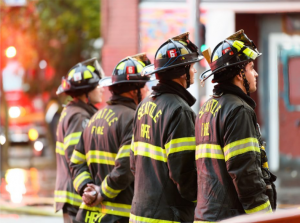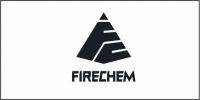 Firefighting and rescue operations are critical components of emergency response systems worldwide. In urban settings, the risks associated with fire incidents are substantial, not only due to the physical destruction they cause but also the potential for loss of life. The development of an optimal firefighting and rescue operational plan is essential for ensuring timely and efficient responses to such emergencies. This plan involves coordinating resources, deploying teams effectively, and ensuring safety protocols are followed. It incorporates advanced technologies, well-trained personnel, and a well-established framework for rapid decision-making. The goal is to mitigate the impact of fires and maximize the potential for saving lives and property.
Firefighting and rescue operations are critical components of emergency response systems worldwide. In urban settings, the risks associated with fire incidents are substantial, not only due to the physical destruction they cause but also the potential for loss of life. The development of an optimal firefighting and rescue operational plan is essential for ensuring timely and efficient responses to such emergencies. This plan involves coordinating resources, deploying teams effectively, and ensuring safety protocols are followed. It incorporates advanced technologies, well-trained personnel, and a well-established framework for rapid decision-making. The goal is to mitigate the impact of fires and maximize the potential for saving lives and property.
- Risk Assessment and Strategic Planning
The first step in developing an optimal firefighting and rescue operational plan is conducting a comprehensive risk assessment of the area to be served. This involves analyzing the likelihood of different types of fires (e.g., structural, forest, industrial) and their potential impact. By understanding the hazards, emergency planners can design response strategies that are tailored to the unique characteristics of the region.
This risk assessment also includes identifying high-risk areas such as densely populated neighborhoods, commercial buildings, industrial complexes, and places with significant fire hazards (e.g., chemical plants, warehouses). Emergency planners should incorporate the use of geographic information systems (GIS) and other data analytics tools to pinpoint high-risk zones and develop strategic fire stations placement, ensuring they are optimally located to reduce response times.
A well-informed strategic plan should also outline the resources required for firefighting and rescue operations, including fire trucks, rescue vehicles, personal protective equipment (PPE), and specialized firefighting tools. Moreover, local weather patterns, building designs, and infrastructure resilience should be factored into the planning to ensure the operational plan can address the unique challenges of each situation.
- Integration of Advanced Technology and Automation
The integration of advanced technology is critical to improving the effectiveness and efficiency of firefighting and rescue operations. Technology can significantly enhance decision-making, communication, and resource management during emergencies. For instance, unmanned aerial vehicles (UAVs) or drones can provide real-time aerial views of fire scenes, allowing incident commanders to assess the situation more effectively from the command center.
AI and machine learning can also be used to optimize resource allocation. By analyzing historical data, weather patterns, and fire behavior, AI systems can predict the spread of fires and recommend optimal fire suppression techniques. This allows for the more accurate allocation of firefighting resources and enables responders to anticipate challenges before they occur.
Automated systems, such as remote-operated water cannons or fire suppression systems in high-rise buildings, can also be deployed to control fires in hard-to-reach areas or during particularly dangerous situations. These tools can provide an added layer of protection, especially when personnel are at risk.
Moreover, real-time communication tools that integrate GIS and fire modeling software can enable rescue teams to share information seamlessly, ensuring that everyone involved in the operation has access to the same situational awareness. This reduces confusion and helps to ensure a coordinated response.
- Command Structure and Coordination of Resources
A well-defined command structure is essential for effective firefighting and rescue operations. The Incident Command System (ICS) is one of the most widely used frameworks for organizing emergency response teams. ICS provides a clear hierarchy and defines roles and responsibilities for personnel, helping to avoid confusion during high-pressure situations.
At the top of the ICS is the Incident Commander (IC), who oversees the entire operation. Underneath the IC, there are various sections, such as operations, logistics, planning, and finance, each responsible for specific aspects of the operation. For example, the operations section manages firefighting activities, while the logistics section ensures that the necessary equipment and personnel are available. This hierarchical structure enables fast decision-making and the efficient use of resources.
Coordination between different agencies and departments, including local fire departments, medical rescue teams, law enforcement, and local government authorities, is also critical to success. Firefighting and rescue operations often require collaboration with other emergency services, such as hospitals, civil defense, and public works departments. Having established inter-agency protocols and regular joint exercises can significantly improve coordination during real incidents.
A strong focus should also be placed on resource tracking and management, which can be facilitated by technology such as real-time asset tracking software and mobile communication systems. This ensures that resources are deployed where they are most needed and helps prevent bottlenecks in the response.
- Personnel Training and Safety Protocols
A core component of any firefighting and rescue operational plan is the training of personnel. Firefighters and rescue teams must be well-versed in various firefighting techniques, safety protocols, and the use of specialized equipment. Regular training ensures that personnel can perform effectively under pressure, respond to complex situations, and make life-saving decisions on the spot.
 Training programs should include not only technical skills, such as fire suppression techniques, rescue operations, and the use of advanced firefighting equipment, but also soft skills, including teamwork, communication, and stress management. Emergency responders often face chaotic and dangerous situations, and the ability to maintain focus and clear communication can mean the difference between life and death. Safety is paramount during firefighting and rescue operations. Personnel must be equipped with proper protective gear, including flame-resistant clothing, respiratory protection, and helmets, to minimize exposure to hazards. Additionally, regular health checks and stress management programs can help ensure the physical and mental well-being of firefighters, who often work long hours in dangerous conditions.
Training programs should include not only technical skills, such as fire suppression techniques, rescue operations, and the use of advanced firefighting equipment, but also soft skills, including teamwork, communication, and stress management. Emergency responders often face chaotic and dangerous situations, and the ability to maintain focus and clear communication can mean the difference between life and death. Safety is paramount during firefighting and rescue operations. Personnel must be equipped with proper protective gear, including flame-resistant clothing, respiratory protection, and helmets, to minimize exposure to hazards. Additionally, regular health checks and stress management programs can help ensure the physical and mental well-being of firefighters, who often work long hours in dangerous conditions.
A robust operational plan should also include evacuation and de-escalation procedures, ensuring that when conditions become too hazardous, responders can quickly evacuate and regroup. Having clear protocols for emergency exits, shelter locations, and emergency communication can help safeguard personnel during high-risk operations.
- Resource Management and Logistics
Effective logistics play a crucial role in any firefighting and rescue operation. Resource management is about ensuring that firefighting units, rescue teams, and equipment are readily available and distributed efficiently to areas in need. The management of logistics includes the procurement of equipment, fuel, medical supplies, and personnel transportation, all of which need to be coordinated seamlessly during an emergency response.
A key element of resource management is pre-positioning essential firefighting equipment in strategic locations. This involves planning ahead to ensure that fire stations are adequately stocked with resources and that additional supplies can be delivered quickly when needed. Firefighting units should also have access to specialized vehicles, including aerial ladder trucks, rescue boats, and ambulances, to handle a range of fire and rescue scenarios.
Logistical operations should also focus on maintaining supply chains during disasters. Often, large-scale fires or natural disasters cause significant disruption to transportation routes. Ensuring that supply lines remain open, or finding alternative routes, is a key component of maintaining operational efficiency. Additionally, using AI-powered systems for inventory management can ensure that fire departments always have the necessary supplies on hand.























































